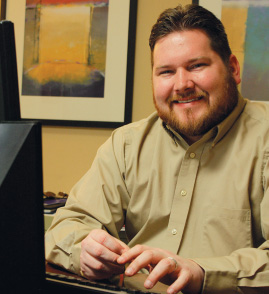
Charlotte Metro Credit Union knows that in order to stay competitive in the nation's second-largest banking center, it must remain on technology's leading edge.
That is just where the $325 million cooperative in Charlotte, N.C., has been for the past eight years under the guidance of David Cooper, vice president/information systems, and CU Times' 2015 Trailblazer IT Executive of the Year.
Recommended For You
"We like to say we are cutting edge, not bleeding edge; you don't want to bleed, but you want to be an early adopter. You're not alpha, you are beta," said Cooper, who oversaw several projects that resulted in improved member satisfaction and credit union performance.
For instance, CMCU overhauled its overdraft program and electronic services. Cooper said the overdraft program received positive member feedback while increasing revenue and lowering losses.
Electronic services also experienced a sharp increase in member utilization with significant functionality improvements.
The upgrades allowed the credit union to offer expanded services like mobile banking without sacrificing member service or increasing the IT budget.
The overdraft initiative created automation to intervene in the charge-off process to notify and help members.
Cooper also created a proprietary algorithm used to monitor and set variable limits.
Semi-annual growth in noninterest income improved significantly after launching in the second quarter of 2012. Interest income from the second quarter to fourth quarter 2011 grew by 3.6%. During that same period in 2012, the credit union experienced 17.8% growth.
Recognizing gaps in the marketplace, Cooper said CMCU also upgraded online banking to a new vendor. The improvement added considerable enhancements to the existing platform, including the capacity to provide customizations, Google-type searches, member-to-member and account-to-account transfers, account aggregation, personal finance management and enhanced electronic file access.
However, annual online banking expenses increased $80,000. To offset it, Cooper brought e-statement production in house, which saved the organization $60,000 per year, covering 75% of the costs incurred by the online banking upgrade.
"Anytime we are looking at something really expensive, we look to see if we could get some efficiency, so we don't have to increase our budget," Cooper said.
When he came on board in 2007, CMCU was growing with assets at about $182 million. Before it could level the playing field with competitors, it had to build a better IT infrastructure and strengthen its backup system.
Therefore, Cooper said another big mission was to deploy a one-to-one disaster recovery system without increasing the IT budget. The credit union accomplished that by creating a virtualized environment with two new storage-area-network devices, two new hosts and VMware. Virtual machines create an internal cloud system using virtual servers instead of actual servers. They are very commonplace now, he acknowledged, but weren't at the time.

"We did that back in 2008 before it was known as a cloud," Cooper said.
The credit union was able to establish one-to-one redundancy at its disaster recovery site for about the same cost that it would have spent to replace its host.
"We got 55 servers for the cost of two because we were an early adopter of VMware," Cooper noted.
In 2009, CMCU launched a mobile banking, including deposit, person-to-person payment, and a limited personal financial management system that shows expenses and balances over time. It does not have account aggregation or budgeting capabilities, but Cooper is working on that.
In fact, he said the credit union hopes to implement this summer a mobile banking interface that will include its own customizations.

Cooper created a proprietary algorithm that was used to monitor and set variable limits. As a result of this enhancement, noninterest income improved significantly.
Members have responded enthusiastically to mobile banking, with penetration now at 42% of CMCU's more than 43,000 member base, and 64% of who actively use it every month, Cooper said.
His ability to spot innovation before everyone else, such as anticipating the smartphone growth in order to capitalize on mBanking, has moved the credit union forward.
However, as much as CMCU wants to be leading edge, Cooper said sometimes it's better to wait.
Mobile deposit was a good example. Cooper felt the software and phone cameras were not there yet in 2012 when everyone started talking about it, so the credit union waited and rolled mobile deposit out in mid-2013.
So, what is the next big thing? "We already have mobile payments to some degree, we are leveraging PayPal for that; however, we don't think that is the long-term solution, we think that is our stopgap," Cooper said.
The credit union is also trying to leverage its technology to support medium-sized businesses. "We're really good for the small-sized businesses but doing some more products would help run the budgeting for the business that has more than just a couple of employees," he said.
Cooper said his first real job was website design in the late 1990s. The dotcom bubble eventually burst and it hurt his company considerably, but not before helping him pay much of his college expenses and land a job out of school with Delta Community Credit Union in Atlanta.
Cooper, a fan of fantasy football, disc golf and travel, is quick to credit CMCU's technological success with the support he gets from the board and management team.
"They are very much on board with technology. They understand the environment that we are in here."
© 2025 ALM Global, LLC, All Rights Reserved. Request academic re-use from www.copyright.com. All other uses, submit a request to [email protected]. For more information visit Asset & Logo Licensing.






